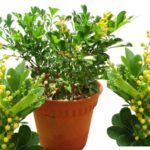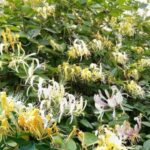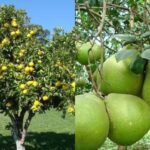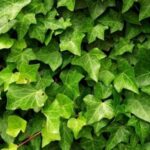In Vietnam, a recent trend has emerged with people cultivating and purchasing Polyscias fruticosa (also known as the “ding lang” or “umbrella tree”) for its medicinal properties. This versatile plant is valued by both the rich and poor alike. Growing Polyscias fruticosa indoors offers a multitude of benefits, from using its leaves to make tea, to incorporating them as a culinary herb in dishes such as fish stew, spring rolls, salads, and even consuming them fresh. When it comes to harvesting the roots of Polyscias fruticosa, timing is crucial as the active compounds in the plant depend on its age.
In traditional East Asian medicine, Polyscias fruticosa has long been revered as a precious herb. According to the Vietnamese herbal dictionary, the roots of this plant possess a neutral nature, a sweet taste, and a plethora of therapeutic effects, including tonic benefits for the five vital organs, detoxification, blood enrichment, lactation stimulation, and digestive aid. Additionally, it serves as a potent energizer, making it an ideal remedy for treating physical weakness and poor digestion.
How long should you grow Polyscias fruticosa before harvesting?
Similar to ginseng, Polyscias fruticosa is believed to require a certain maturity to unlock its full medicinal potential. The younger the plant, the less potent its therapeutic properties. Given its slow growth rate, patience is essential when cultivating this herb. Based on the collective experience of many growers, it is recommended to allow Polyscias fruticosa to reach at least three years of age before considering harvesting. The roots are believed to attain their peak medicinal value between five and ten years after planting, boasting the highest concentration of beneficial compounds. Beyond this period, the plant enters a state of decline, with the roots becoming increasingly gnarled and the nutrients diminishing.

Three-year-old Polyscias fruticosa possesses elevated medicinal properties
However, it is worth noting that some individuals still opt for older Polyscias fruticosa roots to cater to consumer preferences for more aesthetically pleasing shapes. Consequently, older roots often command higher prices in the market, despite potentially offering lower medicinal efficacy compared to younger, optimally aged roots.
Tips for selecting Polyscias fruticosa roots
Polyscias fruticosa can be categorized into two varieties based on leaf size: large-leaf and small-leaf. The small-leaf variety, known as “ding lang nep,” is considered more aromatic and medicinally potent. When choosing Polyscias fruticosa roots, examine the remaining leaves at the top of the plant. If given a choice between equally aged plants, opt for the small-leaf variety as it tends to be more valuable and nutrient-dense, despite its lower yield.
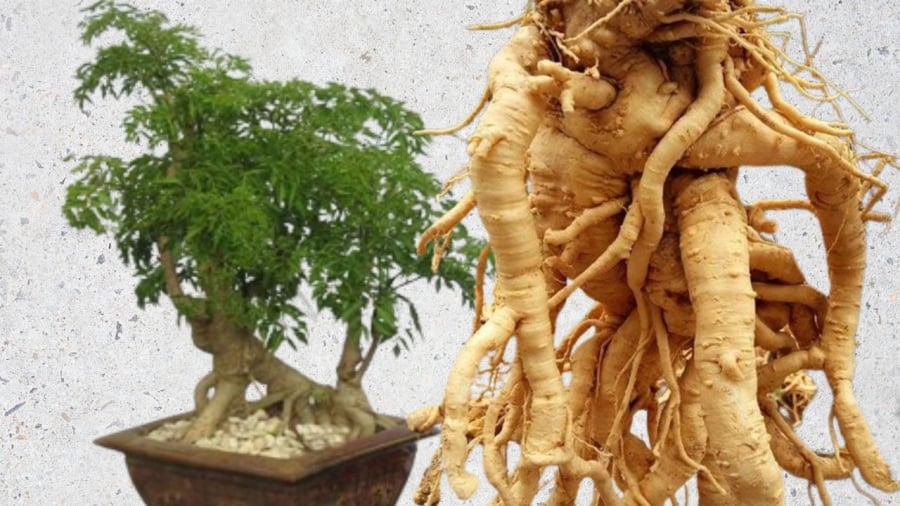
Older Polyscias fruticosa roots exhibit darker colors and a more rugged appearance
When selecting Polyscias fruticosa roots, pay attention to the color as an indicator of age. Older roots tend to have a darker hue, and their primary roots are generally thicker and longer compared to younger ones. Opt for roots with a golden straw color, a pleasant aroma, and a soft, moist texture. The most valuable portion of the root lies between the main root and the stem, and it is common to cut a 10-15 cm segment from this area for wine infusion, along with the roots. Avoid overly knotted and dark-colored roots, unless your selection criteria are primarily based on their unique appearance.
For those seeking aesthetically pleasing roots with intricate root systems for decorative or carving purposes, Polyscias fruticosa aged between eight and ten years, or even older, would be ideal. However, if you are simply interested in their medicinal benefits, roots between the ages of six and eight are generally recommended.
What is the English Ivy? Its Characteristics and Feng Shui Significance
Spring Evergreen, or as we know it, Thuong Xuan, is a familiar friend with a wealth of benefits. This plant is a powerhouse, boasting medicinal and spiritual properties that have captured the attention of many. But what is the true nature of this enigmatic evergreen? What mystical meanings does it hold in the realm of Feng Shui, and which individuals does it favor? Join us as we unravel the mysteries of the Thuong Xuan tree and explore its profound significance.

























